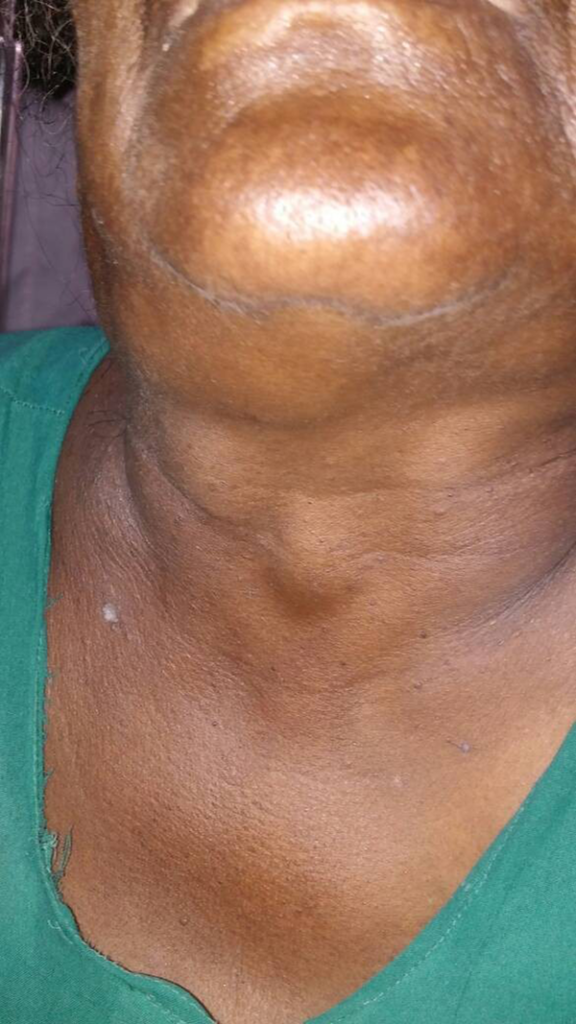CLL is characterized by a progressive accumulation of monoclonal, mature, non-functional B lymphocytes. CLL is usually discovered on routine blood tests as an isolated lymphocytosis. It is defined by a > 5000/uL B-lymphocytes in the peripheral blood that are marked CD5+ and CD23+. The aberrant expression of CD5+ (a T-cell marker) is very specific for CLL. Treatment is not required for asymptomatic patients as it does not improve survival. Rituximab is a very useful drug used for targeted immunotherapy in CLL.
CLL is the most common leukemia in adults in the Western world. Incidence rises with age. 90% of cases are older than 50 years. The median age of diagnosis is 70 years. It affects males > females.
Rai staging system of CLL
based on the fact that there is a gradual and progressive increase in the body burden of leukemic lymphocytes that progressively invade other tissue and compromise bone marrow function.
| Risk stage | Feature | Median survival |
|---|---|---|
| Stage 0 | Lymphocytosis alone | > 13 years |
| Stage I | Lymphocytosis + Lymphadenopathy | 8 years |
| Stage II | Lymphocytosis + spleno- or hepatomegaly | 5 years |
| Stage III | Lymphocytosis + Anaemia | 2 years |
| Stage IV | Lymphocytosis + Thrombocytopenia | 1 year |
Binet staging of CLL
Classifies patients according to the 5 potential sites of involvement (cervical, axillary, inguinal, spleen, and liver) and presence of anemia and/or thrombocytopenia
| Stage | Feature | Prognosis |
|---|---|---|
| Stage A | < 3 sites involved | Comparable to age-matched controls |
| Stage B | ≥ 3 sites involved | 84 months |
| Stage C | Presence of anemia and thrombocytopenia | 24 months |
- Risk factors for CLL
- Chemical exposure
- Farmers and agricultural workers
- Rubber workers
- Petroleum workers
- Familial history (strongest risk factors)
- History of CLL
- History of Low-grade lymphoma
- Mutations, trisomies, anddeletions
- del17p13
- Chemical exposure
- Clinical features Rarely presents with symptoms. Up to 70% of patients are asymptomatic on presentation.
- Weight loss and night sweats (constitutional B-symptoms)
- Peripheral lymphadenopathy
- Hepatosplenomegaly (due to invasion and extramedullary hematopoiesis)
- Fatigue, pallor, breathlessness (due to anemia)
- Recurrent infection and fever (due to neutropenia)
- Easy bruising (due to thrombocytopenia)
- Leukemia cutis (due to skin involvement)
- Macules, plaques, blisters, ulcers and nodules

- How does CLL cause cytopenia (anemia and thrombocytopenia)?
- Leukemic infiltrate of the bone marrow
- Autoimmune hemolysis and destruction of platelets
- Hypersplenism
- Chemotherapy
- What are the autoimmune complications seen in CLL? Occurs in 4% to 25% of CLL/SLL patients
- Autoimmune Hemolytic Anaemia
- Immune Thrombocytopenia
- Autoimmune agranulocytosis
- Pure red cell aplasia
- Investigations
- Peripheral Blood evaluation
- Complete Blood Count: absolute lymphocytosis of >5×10^9/L (patients can have counts as high as 100×10^9/L)
- Peripheral Blood Film:
- Lymphocytosis (cells are small, mature appearing lymphocytes with a dense nucleus, partially aggregated or clumped chromatin without discernable nucleoli, they have a scanty basophilic cytoplasm), “
- Smudge” cells or “basket” cells (Lymphocytes that appear to have been flattened or smudged in the process of being spread on the glass slide.
- Bone marrow evaluation ***BMA and trephine biopsy are not required for diagnosis of CLL
- Bone Marrow Aspirate: normal to increased cellularity with lymphocytes accounting for more than 30% of nucleated cells
- Trephine Biopsy: exhibits a range of infiltration patterns (focal, non-para trabecular nodules; interstitial infiltrates – CLL cells are admixed with hematopoietic elements and diffuse solid lesions) ***The pattern of Bone marrow infiltration is useful to distinguish CLL from other DDx considerations
- Immunophenotyping (Flow cytometry) ***essential for establishing Dx and prognostication
- B-cell markers: CD19+, CD20+, CD23+, CD5+ (Aberrant expression of CD5+ – a T-cell markers – is very specific for CLL) SmIg weak (Only a single IgL chain is expressed confirming the clonal nature of these cells)
- T-cell markers: CD3+, CD4+, CD5+, CD8+
- Cytogenetics ***Evaluation with FISH is routine for pretreatment evaluation of patients with CLL
- Chromosomal abnormalities: del(13q), del(17p), del(11q), trisomy 12 in more than 80% of CLL cases *** These alterations are neither sensitive nor specific for CLL Dx.
- Peripheral Blood evaluation


- Non-favorable Prognostic markers
- Clinical: Male, Age > 60y, ECOG status > 0 , Lymphocyte doubling time <12 months
- Lab: CD38+, CD49d+, ZAP-70+, Elevated serum-free IgL chain, IgM peak, Elevated serum thymidine kinase, Elevated B2-microglobulin
- Genetic: IGVH unmutated, IGHV3-23 usage, 17p13 del, TP53 mutation, t(14:19)(q32:q13), MYC translocation, Complex Karyotype, NOTCH1 mutation, SF381 mutation
- Favorable prognostic markers
- Clinical: Female, Age <60y
- Lab: CD38-, CD49d-, ZAP-70-
- Genetic: IGHV hypermutated, Trisomy 12, 13q14 del
- What is the difference between CLL and SLL?
- SLL is essentially the solid tissue (lymph node) component of CLL.
- The diagnosis of SLL is reserved for:
- Lymph node biopsy consistent with CLL/SLL: diffusely effaced architecture, naked germinal centers, infiltration of mature-appearing small lymphocytes
- Absolute peripheral lymphocytosis < 5000/uL
- Treatment
- Fludarabine + Cyclophosphamide + Rituximab for young, healthy patients
- Chlorambucil + Rituximab for older patients, or patients with comorbidities
- Prednisone or IVIG for autoimmune manifestations
- Splenectomy for autoimmune cytopenia
- Complications
- Chemotherapy related complications
- CMV reactivation seen with Fludarabine, among other drugs
- Hypogammaglobulinemia (5-10%)
- Autoimmune hemolytic anemia (1-5%): Tx with Prednisone or IVIG
- Immune thrombocytopenic purpura (1-5%): Tx with Prednisone
- Pure red cell aplasia (1-6%): Tx with Prednisone
- Richter transformation (5%): sudden onset of B-symptoms. Transformation of CLL to high-grade non-Hodgkin lymphoma.
- Chemotherapy related complications
